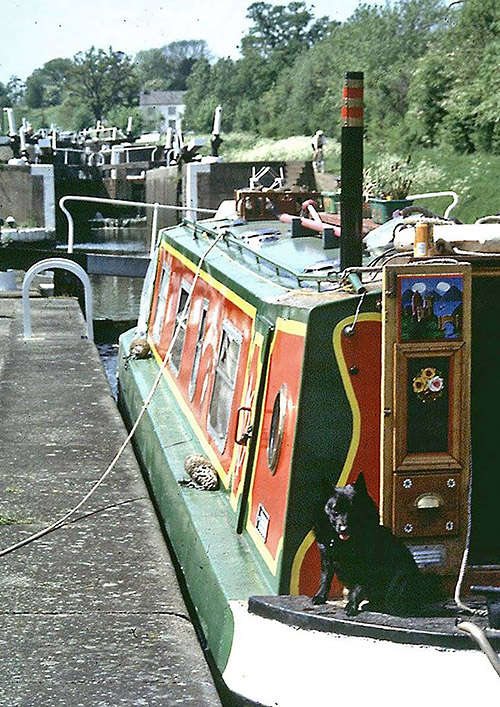
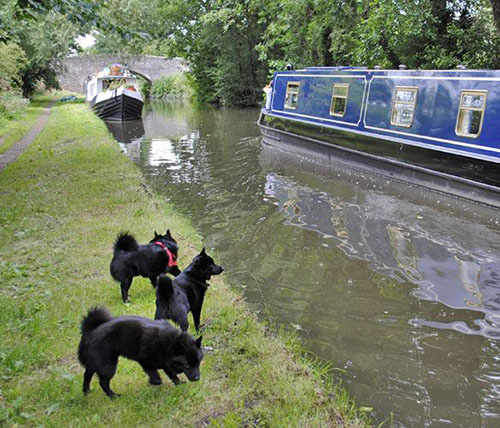
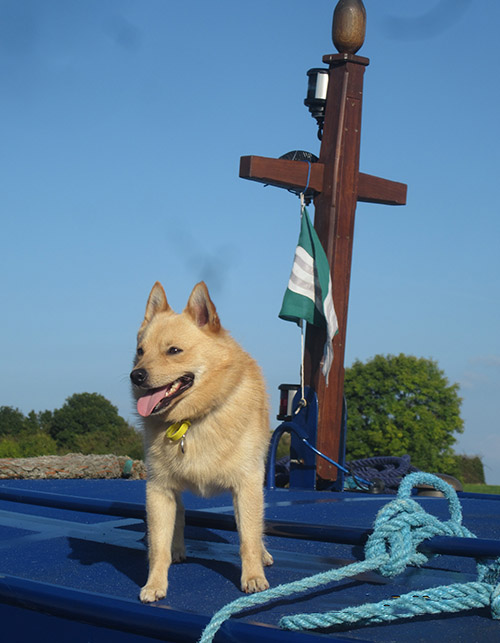
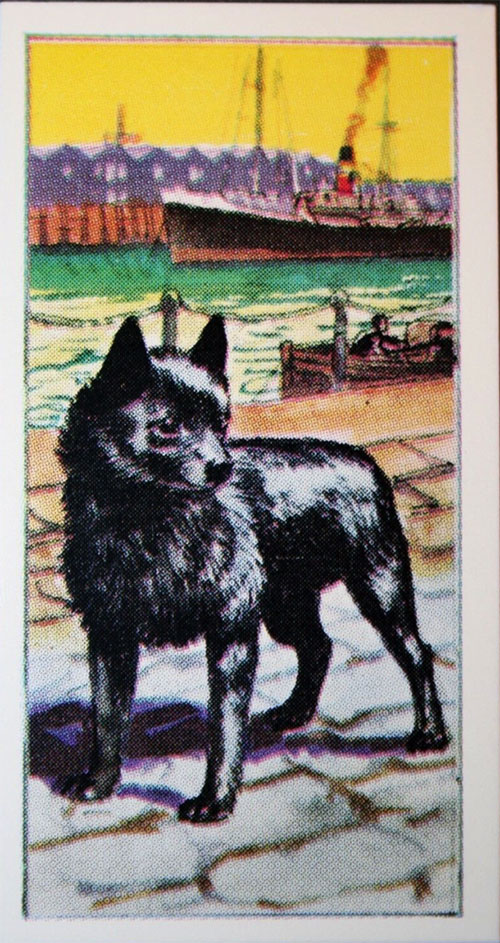
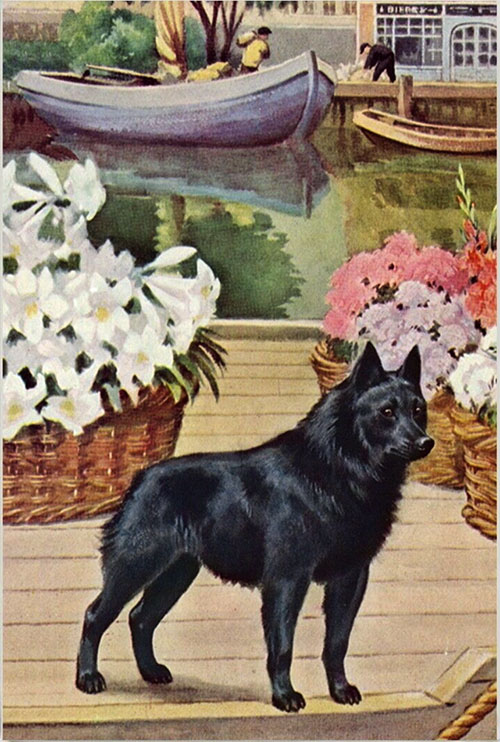
BY DIANE FORKNALL
The breed was widely found throughout Belgium and was a favourite with craft guilds, particularly the Shoemakers’ Guild. Although it is not known for certain why the Schipperke had a docked tail, it is said that in revenge for unwanted visits to a house by a neighbour’s Schipperke, the owner chopped the tail off the neighbour’s dog! Apparently, others were so impressed by the little dog’s appearance that it became fashionable. There is also the tale of two black dogs who were said to have saved the life of William of Orange from a would-be assassin. The two dogs are believed to have been Schipperkes.
In about 1690, shoemakers in Brussels organised shows and paraded their Schipperkes wearing elaborate hand-fashioned brass collars, which can still be seen in museums around Belgium. The people of Brussels referred to these dogs as Spitz and it was only after the breed club was formed that they were called Schipperkes. This tailless little black dog also found favour with many bargees, and according to the boatmen, the word Schipperke came from the word for boat – Schip – and means ‘littleskipper’. The first known import of a Schipperke to England was in 1887 – a bitch called Flo who was in whelp and was imported by Mr JM Berrie.
In February 1890, the Schipperke Club of England held its first show. The first champion was an imported dog, Ch Shtoots from Belgium. At that time, the majority of Schipperkes were black, but other colours did occur. A letter was sent to all club members to have chocolate-coloured included in the breed standard, but at a special meeting, the proposal was defeated 15 to 25 against!
In an effort to increase the breed’s popularity, a resolution was passed by the Northern Schipperke Club to add coloured coats to the breed standard and to put on separate classes for them. Interest in the breed was growing and six sets of Challenge Certificates (CCs) were allocated in 1929 and again in 1930; the kennel of Ernest Holmes O’ The North won nine of the CCs. Two world wars meant that there were very few shows and fewer litters. After the Second World War, championship shows were resumed and more litters were being born. There were a number of leading breeders and exhibiters who influenced the breed between the end of the war and the early 50s, such as Mrs D Poyser (Oakenhall), Mrs E Holmes (O’ The North), Mr and Mrs Ludford (Schippland) and Mrs S Nisbet (Skipsgreen), to name but a few. Mrs GF Langton imported Ch Pudi of Moorhaven, and together with Mr Len Hammond, made him up in 1978.
Later notable breeders who also influenced the Schipperke include Eileen Vincent of the Tarnhows kennels with both her black and cream Schipperkes. Anne Chadwick (Hallbower) was well known for her success both as a breeder and exhibitor. Rosie Archer, a breeder on a smaller scale, steadily produced a line of good dogs: 11 champions in 11 generations. Mary Deats (Aradet), now retired from breeding and exhibiting, has been in the breed for many years. By allowing her dogs to be used at stud, such as Ch Aradet Cannon Ball Express, her imports have widened the gene pool. The impact of this enabled kennels such as Avidore to produce further champions. Ch Sylbecq Good-Time Girl at Avidore produced three champions in her first litter, a breed record, and a further two in her second litter.
There are a number of discerning breeders who have imported and still are importing dogs from countries such as the USA, Russia, Canada, Finland and Belgium to ensure a wider gene pool that is necessary in a relatively small breed. Tails became a contentious issue culminating in a docking ban in 2007, breeders, exhibitors and judges being uncertain after over 100 years of customarily being docked. I have to say on a personal note that after my first tailed litter, I was delighted with the outcome! You will still see some tailless Schipperkes in the ring as some are born tailless or with a stump; others that are docked come from a number of countries that still pursue the practice.
It wasn’t until 2011 that we saw the first tailed Schipperke enter the Utility group ring, Ch Avidore History Maker at Blackshuck – some might say well named! In 2014, history was indeed made again: at East of England, the first dog and bitch tailed champions were made up, Ch Byquy Polar Prince ( cream) and Ch Avidore Hot Gossip (black).
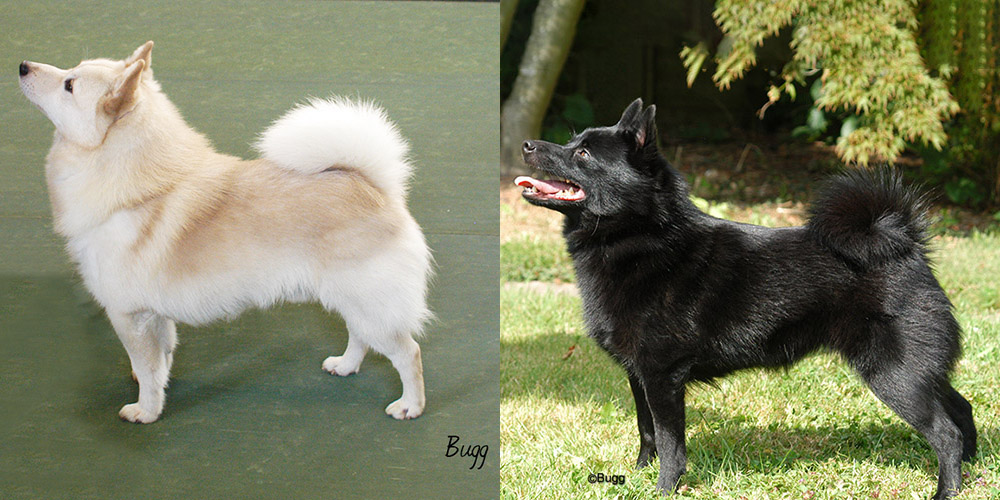
Schipperkes have not always fared well in the group ring, but a number of dogs have been successful. The first winner came from the Schippland kennel, Cracker of Schippland at Three Counties, in 1971, followed shortly afterwards by his kennel mate, Ch Night Dive of Schippland at Belfast. In 1975, Ch Seacross Rogue became the third group winner at Birmingham. Ch Pudi of Moorehaven (Imp South Africa) was Best in Group in 1979 at Bath, and two years later at Bath, took Best in Show (BIS). Ten years later, Ch Hallbower Hans took the group at Darlington. More up to date, Ch/Am Ch Chatelet Aradet Rugby (Imp USA) ShCM was BIS at BUBA in 2010 and won the group at Richmond in 2014. At Paignton in 2015, the group winner was a bitch, Ch/Am Gr Ch/Lux Ch/Int Ch Beachviews Oops I Did It Again (Imp USA). Other creditable wins were at Crufts when Ch Franhowil Black Minstrel For Aradet took G2.
The registrations for Schipperkes dropped drastically during Covid, but hopefully will soon be on the increase. The Schipperke Club has recently introduced Versatility Awards to further show the talents of Schipperkes. These include activities such as agility and obedience. You can be assured that if you own a Schipperke, whether showing or as a pet, you need never have a dull moment.
Click here to view original article as a pdf
This article first appeared in the Kennel Gazette June 2022.
Copyright The Kennel Club Ltd.
Reproduced with their permission.
The first Schipperke Club of England handbook is kept in the Kennel Club Library. Photos taken by Karen Bugg on a visit to the Library during a Schipperke Breed Luncheon held at the KC, in October 2022.
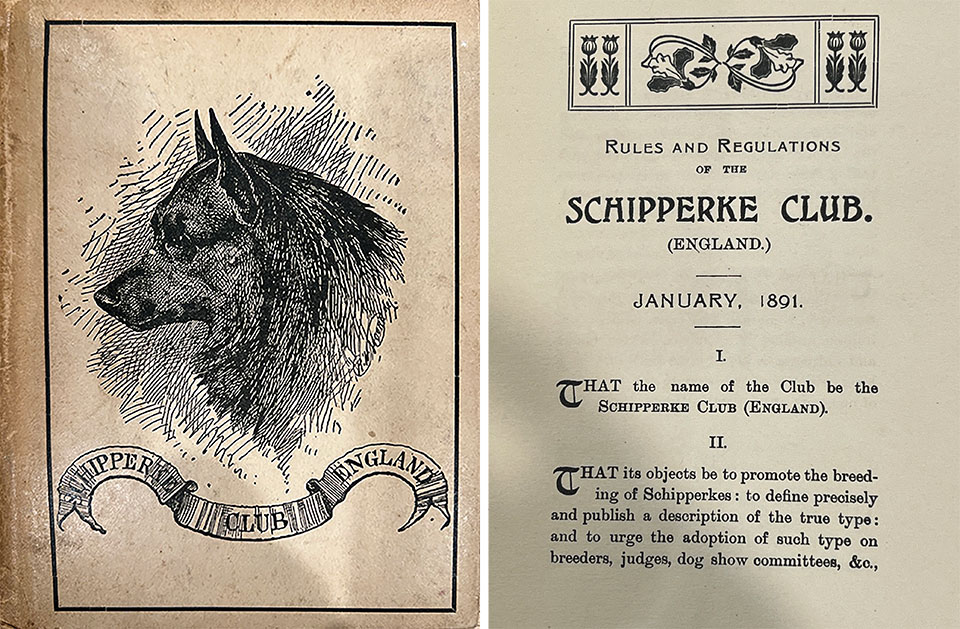
Copyright The Kennel Club Ltd.
Reproduced with their permission.